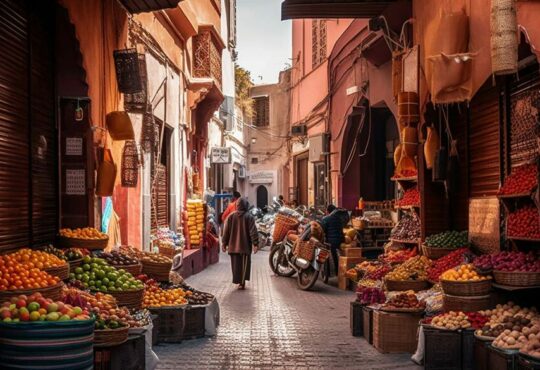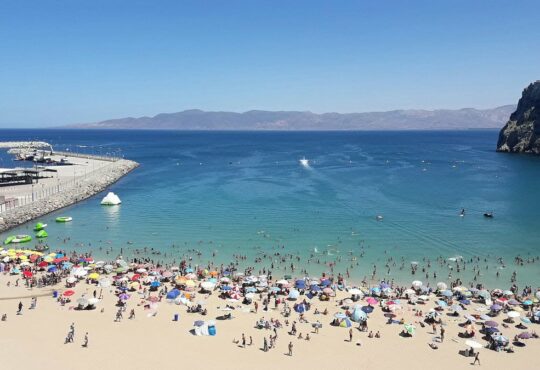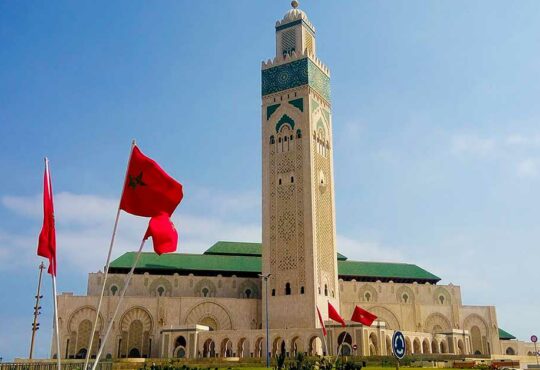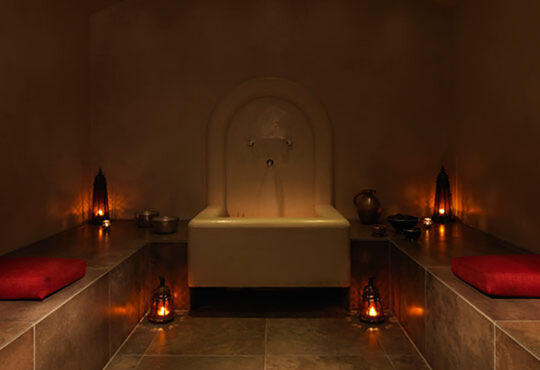2K
Morocco has always been a prime location for backpacking lovers. Located in North Africa and just 4km from Europe, Morocco offers its visitors a rich and diversified tourism experience of culture and history.
Morocco has a unique charm and old-world beauty that is captivating. This, coupled with well-developed transportation and widespread safety makes for a backpacker’s dream destination.
However, backpacking in Morocco can be a very challenging experience for first-time backpackers.
In this post, I will walk you through everything you need to know before going backpacking across Morocco. From the visa requirements, weather, and safety, to the DOS and DON’Ts when backpacking in Morocco.
So keep reading!
Disclaimer: Please keep in mind that we may receive a commission when you click on our links and make a purchase. This, however, has no bearing on our reviews.
- Morocco’s religion is Islam as 99% of Moroccans are Muslims.
- The currency used in Morocco is the Moroccan Dirham (Dh or MAD). 1 US Dollar is now equal to 10.27Dhs.
- The Moroccan Dirham is a closed currency which means it’s hard to find outside Morocco.
- The common languages spoken in Morocco are French and Moroccan Arabic. Make sure to learn a few common words that can help you navigate Morocco easily.
Read more: 20 Things To Keep In Mind Before Visiting Morocco
Have no time to read? No worries, save it on Pinterest for later!
Backpacking in Morocco is a unique experience that will allow you to experience mountains, beaches, and the Sahara desert in one country.
Each one of these landscapes accommodates thousands of years of unique culture and customs of Morocco.
In the High Atlas Mountains where a large population of Moroccan Amazigh lives, you can get close to the Berber-Moroccan identity.
In the Sahara desert, you can ride a camel across the dunes wearing a traditional Sahrawi outfit and drink exotic Moroccan tea.
Is Morocco safe to visit? Is it dangerous? These are probably some of the questions you are asked when you mention that you are traveling to Morocco.
Don’t worry, Morocco is safe to visit!
Yes, Morocco can be a bit of a challenging country for foreign visitors due to the many differences in culture, language, and religion but that does not make it a dangerous country.
The government has implemented a lot of measures to make sure tourists are safe and well cared for during their visit.
Backpacking in the Atlas Mountains in Morocco
It is also important to note that there are many parts of Morocco where the community depends almost completely on foreign tourism for their income.
That’s why people are very careful to make sure that tourists are treated in the best way.
But, this does not mean Morocco is heaven, and it is essential to be a smart traveler.
You should always be aware of your surroundings at all times, not only in Morocco but everywhere around the globe.
There have been cases of pickpocketing in Morocco. People that live in big cities around the world are probably aware of the danger of pickpockets.
In Morocco, pickpocketing usually takes place in crowded areas such as Souqs and busy streets.
A crowded Souk in Morocco
Locals can be friendly and helpful when they see someone trying to steal, and in many cases, they run after the person to catch him and return whatever he stole.
Of course, this isn’t always the case so you have to be careful if you are backpacking in Morocco.
Another thing that might be unpleasant to experience in Morocco is being overcharged in Souks, restaurants, and most taxis.
This is also experienced in many other countries in Africa and Asia but is very common in Morocco. It can be easily managed if you’re aware of it.
Read more: Things You Should Never Do In Morocco As A Tourist
Morocco is an open-door country to people from all over the world. A country that is encouraging tourism through the easy procedures the government has put in place to facilitate getting a Moroccan visa.
Many countries also have the privilege of a free visit visa for 3 months, which is more than sufficient to backpack around Morocco.
Most European countries, America, Australia, and Canada can visit Morocco visa-free
The USA, UK, Canada, Australia, New Zealand, China, Japan, and South Korea are among the countries with the privilege of visa-free entry.
Morocco has also introduced e-visa and visas on arrival for many other countries.
For some of the European, Asian, and African countries with entry visa requirements, getting a visa to Morocco is quite easy and not very costly.
The visa application is done in advance through the Moroccan embassy or consulate in your country and it costs $30 for a single-entry visa and $50 for a multiple-entry visa.
Check your eligibility for Moroccan E-visa and on-arrival Visa
You are probably thinking about the best time to visit Morocco for a good backpacking experience.
Choosing the best time to backpack in this beautiful country will depend on what you are expecting from your visit.
That includes city destinations you want to visit or experiences you want to feel.
This African country will captivate any traveler with its bustling cities, souqs, mouth-watering cooking, traditional riads, and camel tracks in the desert. Your senses will be truly overloaded.
Luckily, Morocco enjoys four distinct seasons, each bringing something sensational for travelers with the extremes of the high Atlas Mountains, the Golden Desert, and miles of stunning coastline.
The weather can be as diverse as the landscape but there is always something to be enjoyed.
Spring is regarded as one of the most enjoyable times in Morocco for backpacking. From March to May, the weather starts to warm up and the temperatures around the country are neither too cold nor too hot.
Spring in Marrakech is beautiful and warm yet not too hot with an average temperature of 26 degrees (Around 78.8’F).
You can explore the Souqs in the old Medina and people-watch from cafes in comfort.
The coastline enjoys a moderate climate year-round and Essaouira and Casablanca are warm and sunny in spring with average temperatures climbing to the 20s (68F).
Fez, on the other hand, is also warm and sunny in spring with temperatures in the low 20s warming up toward summer.
In the Sahara, spring has already begun to turn from warm to hot and in Merzouga, you will be able to enjoy some of the world’s most iconic sand dunes at a balmy 29 degrees (84’F).
Spring in the Atlas Mountains can be beautiful with warmer days and flowers starting to bloom.
Summer is when most of Morocco really heats up and the desert basques in the sun.
Marrakech’s average temperature reaches 38 degrees (100.4’F) in July but the main square Jamaa Fena really comes alive in the evenings.
Fez is a hot 36 degrees (96.8’F) and in the Sahara, Merzouga reaches 43 degrees but the views are best viewed at sunrise and sunset when it’s a few degrees cooler.
Summer is milder along the coast and perfect for enjoying the beaches as Essaouira is at sunny 22 degrees (71.6F) in July and Casablanca in the mid to high 20s.
In fall, temperatures start to dip and might be more comfortable for many.
The beaches of the coastline are not as busy. The desert pulls down and the skies are clear. Marrakech enjoys an average temperature of 28 degrees (82.4’F) in October.
Merzouga and Erg Chebbi dunes in the Sahara are cooled down to 29 degrees during the day, perfect weather for a camel trek. On the coast, Essaouira remains pleasant at 22 degrees (71.6’F).
Winter in Morocco can bring snow with it. With snow falling in the mountains, the desert continues to warm up during the day to around 18 degrees, but the temperature drops dramatically at night.
Marrakech is also around 18 degrees during the day.
Winter could be one of the ideal times to explore the famous city of Marrakech. With fewer visitors, the old Medina and The Majorelle Gardens are less crowded with tourists.
The charm and bright colors of ancient Fez are also perfect for exploring in a mild 16 degrees.
Read more: Beautiful Snow Destinations in Morocco
Backpacking in Morocco will certainly include a lot of walking and probably hiking
too, so be sure to pack comfortable shoes. Two pairs of shoes are always a good idea, one for everyday walking and one for adventurous hikes and trails.
If you are visiting during summertime, the weather can be hot during the day, so loose and light-colored clothes will keep you cool and protected from the blazing sun.
And if you are backpacking in Morocco in winter, pack layers and thermal clothes to keep warm.
Also, keep in mind that Morocco is a Muslim country and you want to dress conservatively. This means no beach shorts and tank tops for women. Knee-length skirts, trousers, long-sleeved shirts, and even T-shirts are okay.
Men can actually wear whatever they want as long as they are not walking shirtless.
I have put together a more detailed packing list for Morocco that you can find here.
Morocco has put in place a developed transport system which has made traveling around Morocco relatively easy.
If hiring a car in Morocco isn’t an option for you, you can easily travel from one region to another via public transport (train, buses, taxis, or plane)
All cities in Morocco have their own local bus system but taxis make it much easier to navigate the city, especially if you are not very familiar with the bus lines and numbers.
Both Rabat and Casablanca have a tramway line that links the most popular places in the city.
The tramway is a practical, safe and affordable way to travel around the city.
The national train system links almost 82 cities in Morocco while other cities can be accessed using intercity buses or big taxis.
Read more: How To Use Public Transport In Morocco?
Trains are the best way to travel between cities in Morocco. Train lines link most cities in Morocco and they are cheaper than intercity taxis or even fancy buses.
Train lines are managed by the ONCF company and most of them have tickets for first class and second class.
The first-class section is good if you are traveling long distances, have too many bags, or if are traveling during a short vacation and you want to avoid the crowd.
First-class tickets are obviously more expensive than second-class ones. The second class section is quite comfortable but sometimes you will have to travel standing if there are no available seats.
Morocco has recently introduced a high-speed train line between Casablanca and Tangier.
The high-speed train called the TGV (Train a Grande Vitesse) can travel at 300km/h, making the trip to Tangier in just 2 hours. This is a lot less than the regular 6 hours on a normal train.
If you land at Casablanca airport and you’re headed to Marrakech, you will take the train straight from the airport to Marrakech which takes about 3 hours.
Morocco has many intercity buses linking almost every city in the county. There are many companies offering this service at different prices and of course, different comfort levels.
Make sure you do your homework before taking these buses. If you have a clear plan for your trip, try and book the bus ticket earlier than your trip and this is for 2 main reasons.
Intercity bus CTM in Morocco
The first one is to choose a window seat in the front because you don’t wanna miss the stunning views.
The second reason is to actually find a seat because they can be booked so quickly, especially in the holidays.
There are several intercity bus companies in Morocco, like CTM, Al Ghazala, and many more.
When traveling inside the city we don’t use the previously mentioned buses, but there are other local buses, usually used by locals only.
I don’t actually recommend using these public buses for foreigners as they are less safe and there is a high chance that you come across some bad experiences such as pickpocketing.
Tramway line in Casablanca, Morocco
A great alternative would be tramways which are only in Casablanca and Rabat and taxis.
Taxis can be costly to take in big cities such as Casablanca, but they are much more affordable in smaller cities like Beni Mellal.
Morocco has several airports with daily regional and international flight lines.
The biggest airport in Morocco is Mohammed V airport, located just outside of Casablanca and can be easily reached using the train from the Casablanca city center.
If you are coming to Morocco, you have a large choice of airlines and also arrival destinations. Some of these airlines offer local flights.
Renting a car is probably what a backpacker won’t do but you never know. Almost all cities have rental car agencies of local and international companies.
I recommend that you go to international rental companies as they are the safer option.
We’ve had many problems on the road when renting cars in Morocco and the truth is that we were never disappointed with the company we chose, they were international agencies such as Avis, Hertz, and Sixt.
If you need to rent a car in Morocco you will need a valid driving license, a passport, and a credit card. Make sure to take insurance, at least the basic one. Never drive without car insurance.
Riads are a type of accommodation in Morocco and one of the most famous ones. Riads are mostly found in imperial cities such as Marrakech, Fez, and Meknes.
Riads are Moroccan houses designed in a square with a garden in the center.
The riads usually contain multiple rooms, living rooms (Moroccan salons), a rooftop, and a Hammam. Many tourists are now favoring Riads over hotels to just experience the traditional Moroccan type of accommodation.
Many Riad owners in Morocco have transformed their homes into boutique accommodations.
Riads are costly, compared to hotels but you can definitely find some cheaper Riad options starting from $20 a night. Riads offer a unique experience that is different and equally pleasurable.
Read more: Dreamy Riads in Morocco: Recommended by Travelers
You have a variety of options when looking for a hotel in Morocco. There are international hotels and local ones which are less expensive.
Affordable hotels are usually found outside the city center and the price starts from $10 a night. You can always use booking.com to find good hotel deals in Morocco
Daily rental of an apartment is also an option if you’re backpacking in Morocco.
Apartment owners advertise their properties to tourists and travelers and the apartments are usually equipped with everything a hotel has.
The price can vary depending on the location of the apartment and the services provided. You can either find it through Airbnb or just look for facebook rental groups in Morocco if you know some French.
Hotels are probably the best option for budget backpackers who are traveling alone or for anyone who is looking to cut the costs of the trip.
Hostels in Morocco offer dormitories and private rooms and they are a great way to socialize while discovering the country and saving money.
There are many good and cheap hostels in Morocco. You can find them through Booking.com, and Airbnb.
Booking.com
Like many other cities in Morocco, Marrakech is an ancient city packed with history and culture. The old city of medina is listed as one of the UNESCO World Heritage sites.
Also known as the red city, Marrakech is one of the busiest cities in Morocco and serves as the biggest tourist destination in the country.
Jamaa El Fena in Marrakech
The former imperial city is home to beautiful palaces, mosques, chaotic souqs, and delicious food.
If you are backpacking in Marrakech, you want to make sure you include Marrakech your itinerary.
Related: Top Things To Do In Marrakech, Morocco
Essaouira is a quiet and spectacular city in Morocco. Located on the west coast, right on the Atlantic Ocean, and just 2 hours away from Marrakech but it feels like a world away.
The walled city of Essaouria is known by the name “the wind city” in Africa because of its super-strong winds by the beach.
Essaouira city in Morocco
Essaouira is a perfect spot to add to your backpacking itinerary in Morocco.
This unbelievable yet calm place is a great destination to relax and enjoy the authentic Moroccan experience without having to deal with tourist crowds and high pricesMarrakech.
Related: Essaouira, Morocco: Top Things to Do and See!
Embarking on a Sahara Desert tour in Morocco is an unforgettable experience.
This amazing, arid landscape stretches across the countries of Mauritania, Mali, Algeria, Libya, and Chad, and offers visitors a unique look into the world’s largest desert.
Camping in the Sahara Desert
With its red sand dunes, rocky plateaus, and bare plains, the Sahara is a stunning sight to behold. Tourists can experience everything from camel rides to camping under the stars in this otherworldly place.
If you’re looking for an adventure like no other, be sure to add the Moroccan Sahara Desert to your backpacking itinerary.
Read more: Sahara Desert Tour: What You Need to Know
One of the most popular tourist destinations in Morocco is the city of Fez, which is known for its ancient Islamic architecture and lively souks (markets). If you’re planning to visit Fez, here are some tips to help you get the most out of your trip.
Fez old Medina
Fez was founded in the 8th century and is one of the oldest cities in Morocco. The city’s medieval architecture is renowned worldwide, and it’s home to some of the best-preserved Islamic monuments in Africa.
You’ll also find plenty of markets and souvenir shops in Fez, so be sure to explore the souks for traditional Moroccan handicrafts.
Read more: Fez, Morocco: The Ultimate First-Timers Guide to Fez
Chefchaouen or Chaouen as locals calls it is one of the most photographed cities in Morocco.
It’s a little town nested in the Rif Mountains and it’s famous for its blue-washed walls and buildings.
The Medina of Chefchaoun is unlike any other in Morocco. It’s small and very clean, and the blue color gives it a calm and relaxing feel.
Read more: Chefchaouen, Morocco: Top Things To Do & See
To explore everything from the bustling markets and the ancient imperial medinas to the dramatic Sahara Desert and the sandy beaches, you’ll need at least two weeks for your backpacking in Morocco trip.
These are a few Morocco itinerary ideas that you could use to plan your trip:
Food in Morocco is considered an integral part of the country’s culture and history.
Maybe you’ve heard about the famous Couscous and Tagine dishes, but the Moroccan food experience is way more than that.
If you’re planning to spend a few days backpacking in Morocco check out our Moroccan food guide that lists every single dish you should taste.
Awareness at all times is important when you are in a new environment. You should always be mindful of your belongings and be aware of the people around you without being suspicious.
Most people are genuine and honest but there are some who will try to take advantage of you because you are a tourist. Don’t let them.
- Avoid walking late at night in empty and narrow streets in the old Medinas. If you are traveling at night stay with a group or stay around big and lighted streets.
- Be vigilant in busy areas. be extra careful in places such as Souqs and busy cities, public transport, and do not keep your money or phone in easily accessed places like in a backpack or your back pocket to avoid being pickpocketed.
- Be careful with taxi drivers. If it is a white Taxi (called a big taxi as well), ask about the price before hopping in and if it’s a small taxi, ask whether he is using the meter or not.
- Haggling and bargaining in Morocco is A MUST, not because people are trying to scam you or anything but just because of how things work in Morocco. Even locals have to haggle for everything they buy from the Souq. Check this post out before going shopping in Morocco. I have added a bargaining strategy there.
- Drones are banned in Morocco. So make sure to not bring a drone with you because it will be confiscated by customs officials.
- It might take more time than expected to get through customs in Morocco. So, just relax and don’t panic because things are usually slow in Morocco. Plus, Don’t expect to check in online when you are traveling in Morocco. The check-in is usually at the airline desk.
- Credit cards are not used everywhere you go. Even though some places have credit cards, they usually charge more money if you pay using your card than cash. The message here is to make sure you carry cash money everywhere you go.
- Having small bills in Morocco is important. You’ll need small bills to give tips or simply to pay for things and services. So, get some coins and 20s in your wallet.
Happy Backpacking!
Booking.com
Was this post useful? Support my work by sharing it on Pinterest and other social media platforms





